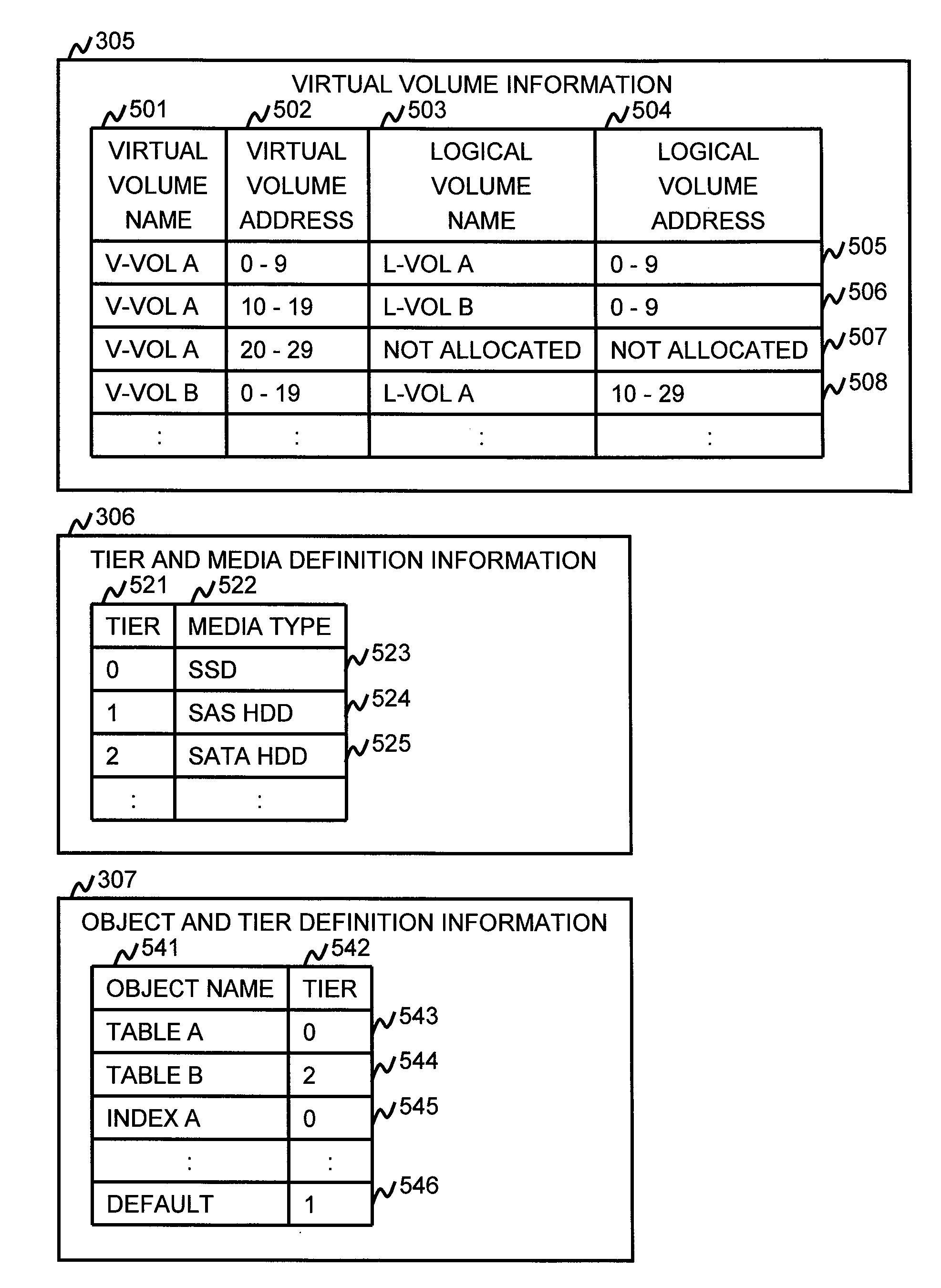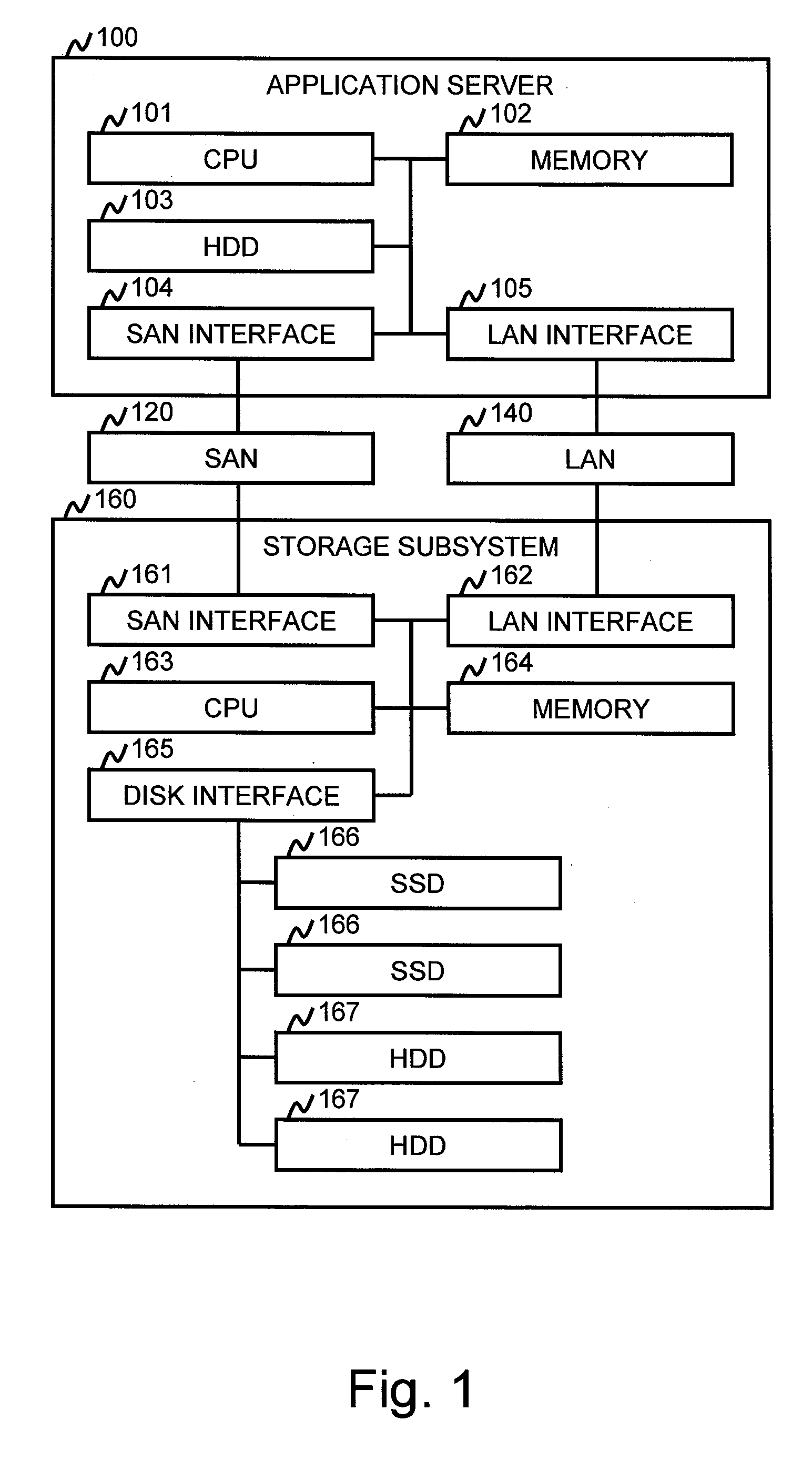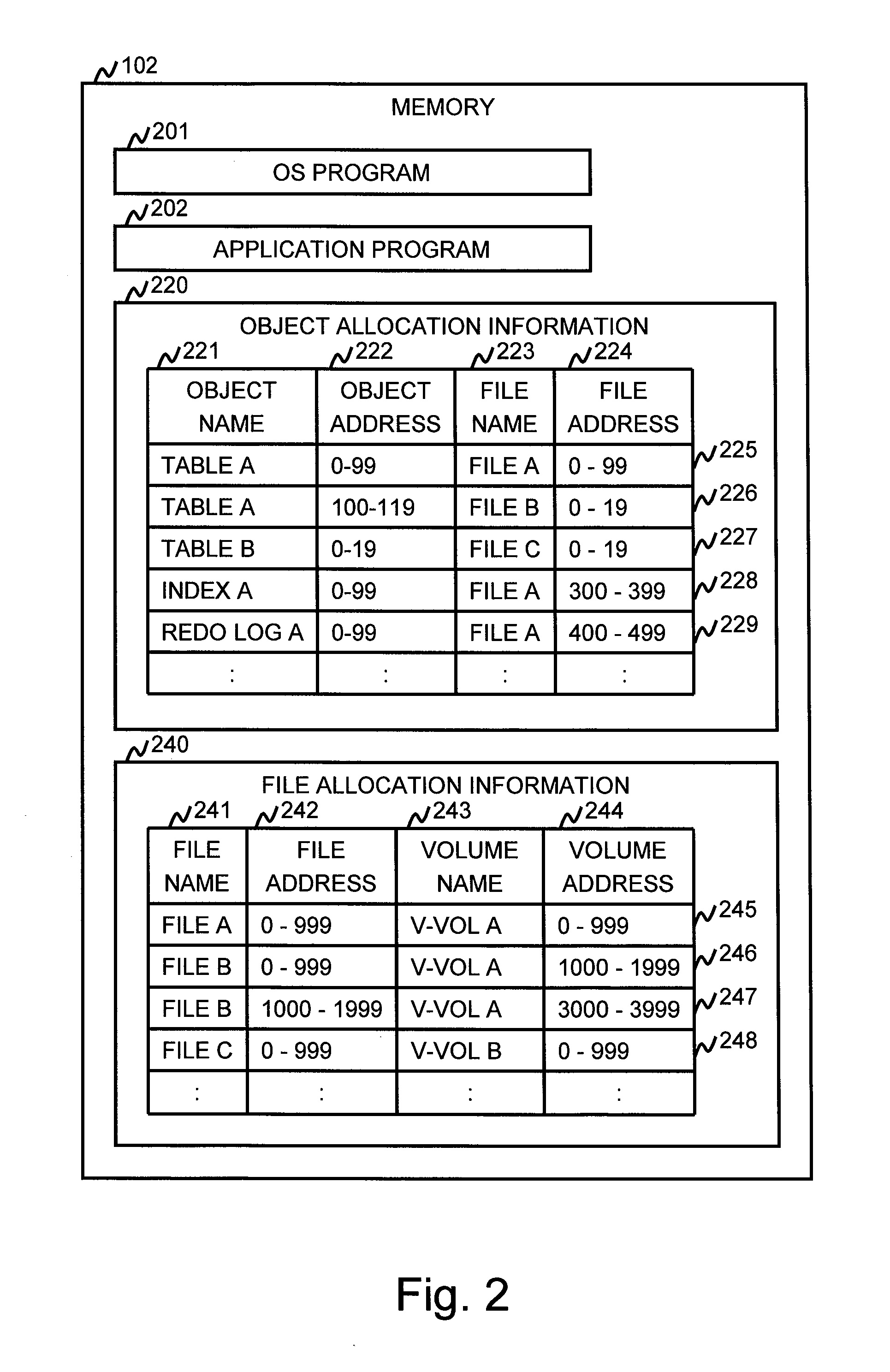Method and apparatus to manage object based tier
a technology of object-based tiers and methods, applied in the direction of memory adressing/allocation/relocation, instruments, computing, etc., can solve the problem that the storage subsystem cannot determine which media to allocate, and achieve the effect of improving the allocation of media
- Summary
- Abstract
- Description
- Claims
- Application Information
AI Technical Summary
Benefits of technology
Problems solved by technology
Method used
Image
Examples
first embodiment
[0037]The first embodiment shows relationships involving object to file system to virtual volume to logical volume to RAID group.
[0038]A. System Configuration
[0039]FIG. 1 illustrates an example of a hardware configuration of an information system in which the method and apparatus of the invention may be applied. The system comprises an application server 100, a SAN (Storage Area Network) 120, a LAN (Local Area Network) 140, and a storage subsystem 160. The application server 100 comprises a CPU (Central Processing Unit) 101, a memory 102, a HDD (Hard Disk Drive) 103, a SAN interface 104, and a LAN interface 105. The CPU 101 reads programs from the memory 102 and executes the programs. The memory 102 reads programs and data from the HDD 103 when the application server 100 starts and stores the programs and the data. The HDD 103 stores programs and data. The SAN interface 104 connects the application server 100 and the SAN 120. The LAN interface 105 connects the application server 100...
second embodiment
[0063]The embodiment shows relationships involving object to virtual volume to logical volume to RAID group. Only the differences between the second embodiment and the first embodiment are described. An object is stored, not in file system but virtual volume directly, in the second embodiment. The application program 202 manages object allocation.
[0064]A. System Configuration
[0065]FIG. 12 illustrates an example of a memory in the application server of FIG. 1 according to the second embodiment (see FIG. 2 of the first embodiment). The memory 102 comprises an OS program 201, an application program 202, and object allocation information for file 1200. The object allocation information for file 1200 is a table and includes columns of an object name 1201, an object address 1202, a volume name 1203, and a volume address 1204.
[0066]FIG. 13 shows an example of a diagram illustrating relationships between table and virtual volume, virtual volume and logical volume, and logical volume and RAI...
third embodiment
[0071]The embodiment shows relationships involving object to virtual HDD to virtual volume to logical volume to RAID group. Only the differences between the third embodiment and the first embodiment are described. An object is stored, not in file system but VHD (Virtual HDD), in the third embodiment. The hypervisor program 1701 manages object allocation.
[0072]A. System Configuration
[0073]FIG. 17 illustrates an example of a memory in the application server of FIG. 1 according to the second embodiment (see FIG. 2 of the first embodiment). The memory 102 comprises an OS program 201, an application program 202, a hypervisor program 1701, a virtual machine 1702, object allocation information for VHD 1720, and VHD allocation information 1740. The hypervisor program 1701 runs the virtual machine 1702. The virtual machine 1702 runs the application program 202. The object allocation information for VHD 1720 is a table and includes columns of an object name 1721, an object address 1722, a VHD...
PUM
 Login to View More
Login to View More Abstract
Description
Claims
Application Information
 Login to View More
Login to View More - R&D
- Intellectual Property
- Life Sciences
- Materials
- Tech Scout
- Unparalleled Data Quality
- Higher Quality Content
- 60% Fewer Hallucinations
Browse by: Latest US Patents, China's latest patents, Technical Efficacy Thesaurus, Application Domain, Technology Topic, Popular Technical Reports.
© 2025 PatSnap. All rights reserved.Legal|Privacy policy|Modern Slavery Act Transparency Statement|Sitemap|About US| Contact US: help@patsnap.com



